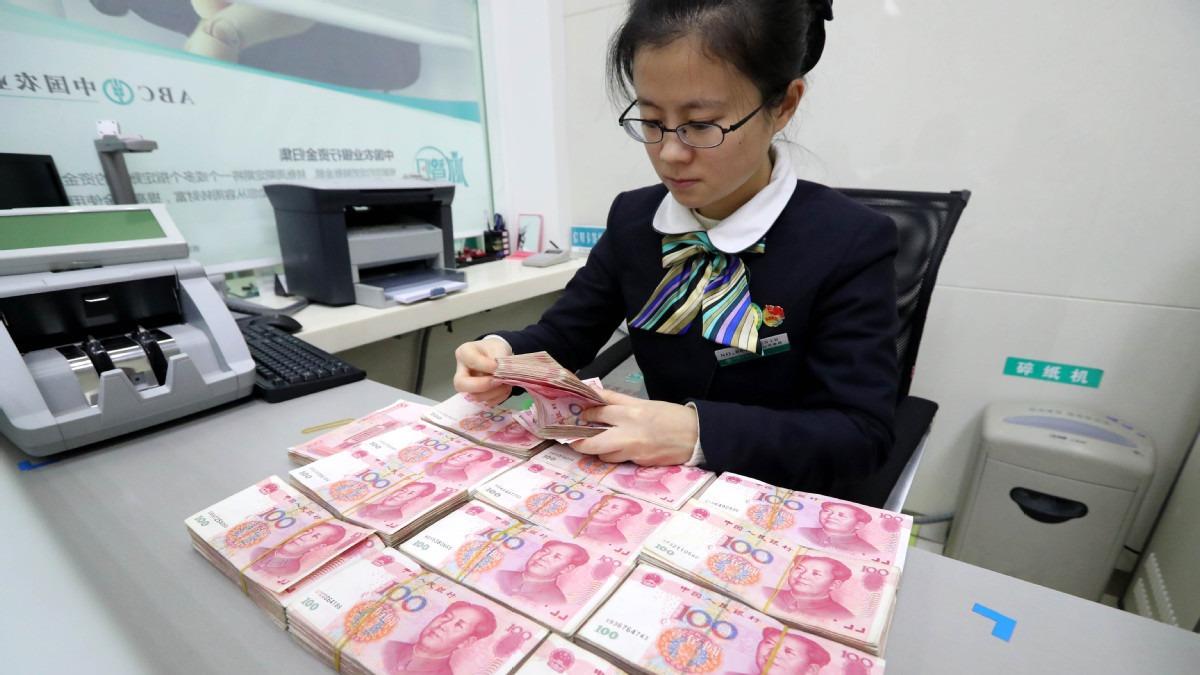 In this undated photo, a clerk counts cash at a bank in Huaibei, Anhui province. (PHOTO PROVIDED TO CHINA DAILY)
In this undated photo, a clerk counts cash at a bank in Huaibei, Anhui province. (PHOTO PROVIDED TO CHINA DAILY)
BEIJING - China's new market-oriented benchmark lending rate fell Thursday, a boost to market liquidity and a boon for small and medium-sized firms amid the country's fight against the epidemic.
The one-year loan prime rate (LPR) came in at 4.05 percent Thursday, down from 4.15 percent a month earlier, according to the National Interbank Funding Center run by the People's Bank of China (PBOC).
China cut the one-year loan prime rate to 4.05 percent Thursday, down from 4.15 percent a month earlier, according to the National Interbank Funding Center
The above-five-year LPR fell 0.05 percentage points from the previous reading to 4.75 percent.
ALSO READ: LPR reform confirms domestic orientation of monetary policy
The LPR is a lending reference rate set monthly by 18 banks. The People’s Bank of China (PBOC), the central bank, revamped the mechanism to price LPR in August 2019, loosely pegging it to the medium-term lending facility (MLF) rate.
The lower LPR, based on rates of the central bank's open market operations and released on a monthly basis, is in line with market expectations as China continues to inject market liquidity to buffer the blow from the novel coronavirus outbreak.
The central bank lowered the interest rate for the medium-term lending facility (MLF), a major reference rate for the LPR, by 10 basis points on Monday, while injecting 300 billion yuan (about US$42.8 billion) into the financial market through reverse repos and MLF.
READ MORE: PBOC cuts 1-yr MLF rate by 10 basis points to support economy
The five-basis-point reduction in the above-five-year LPR will help bolster infrastructure investment and keep the property market stable, said Wen Bin, chief analyst at China Minsheng Bank
Wen said the five-basis-point reduction in the above-five-year LPR will help bolster infrastructure investment and keep the property market stable, noting that investment is likely a main growth driver in the near future.
In its latest monetary policy implementation report, the PBOC said the introduction of the LPR has helped push down the lending rate for new corporate loans on a larger scale.
The PBOC also pledged more monetary and credit support to combat the outbreak and efforts to smooth the transmission of the LPR mechanism.
"The implicit floor interest rate for loans will be resolutely eliminated," the PBOC said.
As of Feb 14, China's banks had provided over 537 billion yuan of credit support to help companies restore production amid the fight against the novel coronavirus outbreak, official data showed.
The capital market has reacted positively toward the slew of fresh liquidity, with major stock benchmarks clawing back all losses from Feb 3, the first day of trading after the Spring Festival holiday.
The Shanghai Composite Index closed at 3,030.15 points and the Shenzhen Component Index at 11,509.09 points on Thursday, both up from the close on the last trading day before the holiday.
READ MORE: Chinese shares close higher Thursday
The PBOC pledged more monetary and credit support to combat the outbreak
Spikes in overseas capital inflow and global index provider MSCI's inclusion of six more Chinese A-shares to its China A Onshore Index showcased global confidence in China's financial market despite the epidemic.
China is taking more targeted measures to resume production and support companies hit by the outbreak.
The State Council executive meeting on Tuesday urged a multi-pronged approach to facilitate business operations and employment, while local authorities including those in Shenzhen, Shanghai and Changchun in northeastern Jilin province offered to issue more policy-backed loans, further lower interest rates and discount interest payments for micro, small and medium-sized companies.
To tackle short-term cash flow challenges, China's financial authorities have enhanced targeted support for micro, small and medium-sized enterprises to steer their funding costs down.
ALSO READ: PBOC adopts measures to ensure stability amid virus outbreak
Authorities have also instructed lenders to roll over the loans of companies that have trouble repaying their debts as a result of the outbreak.
Proactive fiscal policies have also been rolled out to buffer economic cooling, including expanding tax and fee cuts to benefit firms and individuals and increasing the issuance of local government special bonds.


